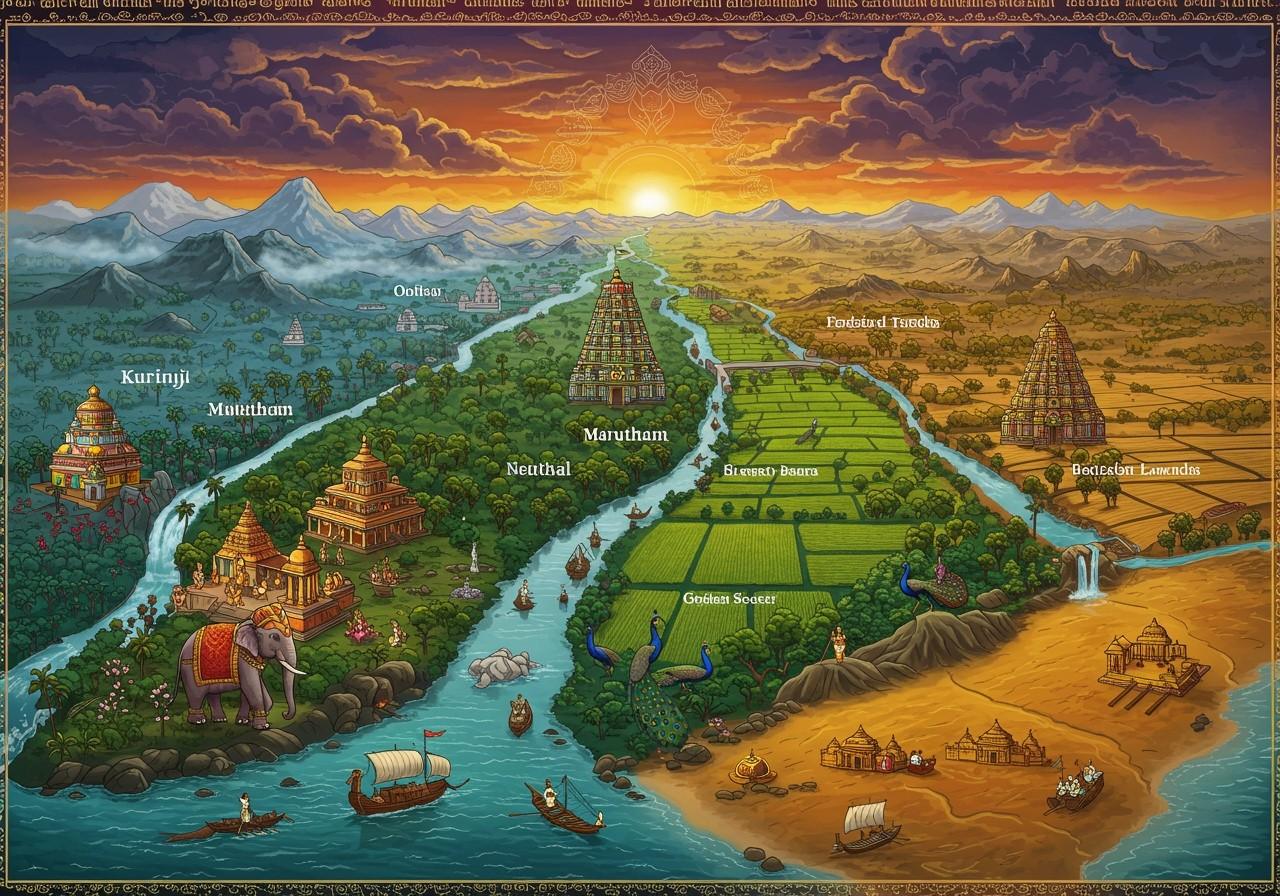
Tamilakam, the ancient Tamil country, boasts a rich tapestry of cultural and ecological diversity. This exploration delves into the geographical and ecological facets of Tamilakam, offering a comprehensive understanding of its unique landscapes and ecosystems. Discover how the geography and ecology of this ancient land shaped its historical significance and cultural heritage.
Geographical Boundaries of Tamilakam
Historically, Tamilakam encompassed the southernmost region of the Indian subcontinent, including present-day Tamil Nadu, Kerala, Puducherry, Lakshadweep, and southern Andhra Pradesh. Its natural boundaries were the Tirupathi Hills to the north, Kanyakumari to the south, the Bay of Bengal to the east, and the Arabian Sea to the west. Ancient Tamil Sangam literature provides valuable insights into the region’s geography. This identifiable cultural region has thrived for almost two millennia, boasting significant literary and historical contributions, particularly from the Sangam period.
Topography and Climatic Zones
Tamilakam’s topography is diverse, ranging from coastal plains to mountainous regions. The Western and Eastern Ghats significantly influence the climate and rainfall patterns, resulting in distinct tropical wet, tropical dry, and semi-arid zones. Monsoon seasons play a vital role in shaping agricultural practices and daily life.
Major Rivers and Water Bodies
Major rivers, including the Kaveri, Vaigai, and Tamiraparani, were crucial for agriculture, trade, and settlements. Man-made reservoirs (eripatti) and sophisticated irrigation systems (kudimaramath) demonstrate the ingenuity of ancient water management techniques. Coastal and inland water bodies also played significant roles in the region’s ecology and economy.
Ecological Zones (Tinais)
Ancient Sangam literature describes five distinct ecological zones known as ‘Tinais’: Kurinji (mountainous), Mullai (forested), Marutham (agricultural), Neythal (coastal), and Palai (desert). Each Tinai possesses unique characteristics that profoundly influenced the lifestyle, occupations, and cultural expressions of the people who inhabited them.
Flora and Fauna of Tamilakam
Tamilakam is home to a diverse range of flora, from lush tropical rainforests to dry deciduous forests. Key plant species include teak, sandalwood, and bamboo. The region’s fauna is equally diverse, featuring elephants, tigers, peacocks, and a variety of bird species. Sacred groves (kaavu) played a vital role in biodiversity conservation, reflecting a deep respect for nature.
Agriculture and Natural Resources
Agriculture in Tamilakam centered around crops like rice, millet, and sugarcane. Spice cultivation, particularly pepper and cardamom, was vital for trade. Other important natural resources included timber, minerals, and gemstones. Traditional knowledge and sustainable practices were essential for responsible resource management.
Cultural and Historical Significance
The geography and ecology of Tamilakam profoundly influenced its cultural and historical development. Natural landscapes inspired Tamil poetry, art, and architecture. Historical trade routes and ports facilitated cultural exchange with other regions. Geography also played a significant role in shaping religious practices and festivals.
Sacred Black Sesame Seeds in Tamil Culture
Black sesame seeds (கருப்பு எள்) hold deep cultural and religious significance in Tamil traditions. They are an essential component of various customs and ceremonies.
Poojn.in, India’s leading cultural goods store, offers premium quality black sesame seeds and other essential items for Tamil rituals. Our selection includes:
- 100% pure and natural black sesame seeds: Sourced from trusted farmers, our black sesame seeds are ideal for all traditional rituals.
- Brass lamps (விளக்கு): Beautifully crafted brass lamps to illuminate your sacred space.
- Cotton wicks (திரி): High-quality cotton wicks for use in traditional lamps.
- Pure ghee (நெய்): Pure ghee for offerings and rituals.
- Copper vessels (செம்பு பாத்திரம்): Authentic copper vessels for various ceremonial purposes.
Visit Poojn.in today to explore our complete Tamil Pooja collection and ensure the authenticity and purity of your sacred rituals.
Conclusion
Tamilakam stands as a testament to the harmonious interplay between geography, ecology, and cultural heritage. Its diverse landscapes and rich ecological zones have profoundly shaped the traditions and lifestyles of its people. Understanding Tamilakam’s geography and ecology allows us to appreciate the depth of its historical significance and cultural richness, inspiring us to preserve these treasures for generations to come.
Explore more about ancient Indian culture and traditions on Poojn.in’s blog.


